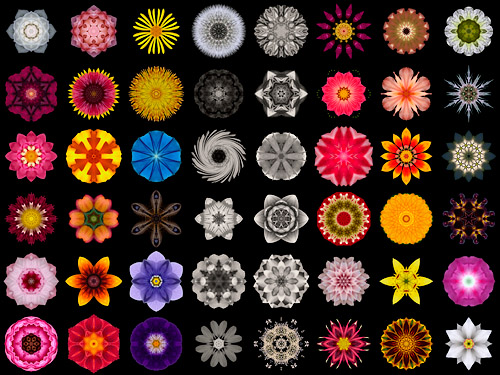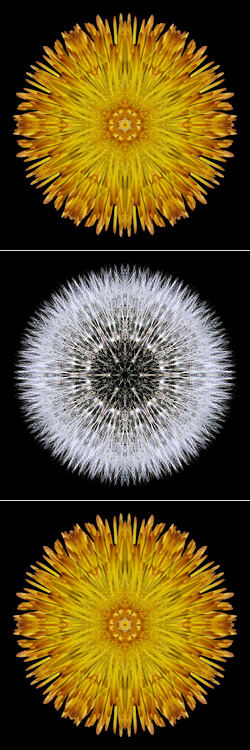
I am a psychotherapist, photographer/digital artist, and writer.
I was born in Buffalo, New York, in 1951. I started photographing in high school where, as yearbook editor, I took most of the candid and “art” pictures. After college, I moved to New York City. There, for several years, I did black-and-white street photography, took pictures of musicians for a book I wrote on American folk music, shot an occasional record album cover, and worked part-time as a photojournalist. When I left New York, I left my darkroom — and photography — behind.
In 2001, after a 20-year hiatus, I bought a digital camera and started shooting again. The shift from straight black-and-white, wet-chemistry photography to shooting in color and manipulating images on a computer was literally an eye-opener. Rather than the people and buildings I had shot in my black-and-white days, I found myself shooting patterns of color and light. I learned to manipulate the images, hoping at first merely to improve them, but soon realizing that once an image file was on my hard drive, I could do anything I wanted with it.
Although I still take pictures of street life, nature, and people, my current preoccupation is with transforming photographs of flowers, stone, metal, wood, and the sky into mandala-like images. My early influences included Walker Evans and Diane Arbus. The present work is inspired by the paintings of Georgia O’Keeffe, the nature photographs of Andreas Feininger, and the flower images of Harold Feinstein, with whom I briefly studied.
My personal motivation in creating the Flower Mandala images featured here was to heal from a decade of physical and emotional trauma, the consequence of a near-fatal event in Albany, New York, in 1993. This event, which culminated in a near-death experience, set me on a spiritual path I’m still following today.
Creating the flower mandalas is part of that path. I tend to work on several mandalas at once. On each piece, I spend anywhere from a few hours to a sequence of several-hour sessions spread out over a couple of months. The experience is reminiscent of meditation.
My choice of the hexagram (the Star of David, “beloved” in Hebrew) as the organizing shape for most of these mandalas was subconscious, but I believe this choice was no accident. In many traditions, the Star of David, composed of two overlapping triangles, represents the reconciliation of opposites — male/female, fire/water, and so on. Their combination symbolizes unity and harmony. Listening to what the mandalas were telling me led me out of a dark place and, indirectly, to my decision to become a psychotherapist.
Carl Jung, one of the fathers of modern psychology, believed mandalas are a pathway to the essential Self and used them in his own personal transformation. In a small way, as both psychotherapist and mandala artist, I carry on Jung’s tradition. I live north of Boston, MA., where I do psychotherapy primarily with artists and people with addictive behaviors. I display several of the flower mandalas in my treatment rooms, and from time to time they become part of discussions with clients. The combination of natural elements and digital manipulation seems both to stimulate and to relax them.
The selection of mandalas I’m posting here is part of a book-in-progress. My intent is to pair 52 images with inspirational quotations such that each image-and-quote pair resonates with a fundamental aspect of human experience. I invite participation from anyone who cares to contact me, either through commenting on the blog posts here, by e-mail, or through the Flower Mandalas Project group on Beliefnet.com.
I hope publication of these images, and opening the discussion of art, healing, and transformation to the Beliefnet community, will further the process of harnessing the power of art to heal and to transform on both a personal and a global level.
Your stories
What about you? I invite you to share your stories, ideas, and feelings that pertain to art, healing, and transformation — all the arts, expressive and performing, classical and popular. How has art influenced your life, either as creator or consumer? You can present your stories in the Art, Healing, and Transformation group on Beliefnet.com, or you can e-mail them to me at phototransformations@verizon.net.
Thanks!
More anon,
– David
Discussion:
My Story
Art, Healing, and Transformation group
Flower Mandalas Project group
© 2007, David J. Bookbinder
